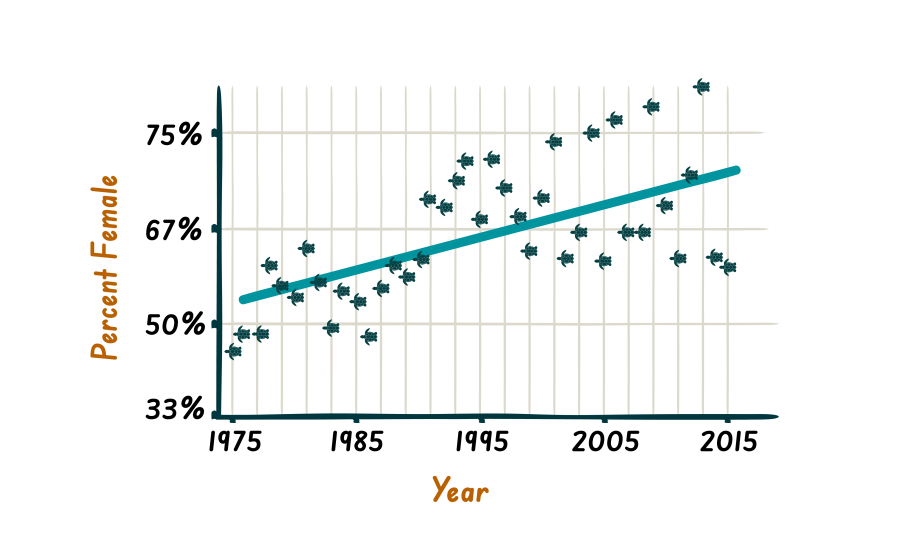In Graphic Detail: Sea Turtle Feminization
Although conservation efforts seem to be working, sea turtles are increasingly born female.
Article body copy
When Anne Meylan began studying green turtles in Bermuda in the late 1980s, she wasn’t concerned about how many were female. Sex ratios were just one part of the data set she was gathering on the turtles, who migrate to the island in the northwest Atlantic Ocean to spend their youth foraging and growing. But now, her multidecadal analysis, published in Marine Biology, suggests a clear long-term trend: more and more of the turtles that visit are female.
As with many egg-laying reptiles, the sex of marine turtles is determined by the temperature of the embryo during incubation. Despite the many successes in reviving sea turtle populations over the decades—Florida beaches boasted a record-breaking 133,941 loggerhead turtle nests in 2023—climate change is causing nest temperatures to rise and likely driving widespread feminization across species.
The latest research from Meylan and her team at the Fish and Wildlife Research Institute in St. Petersburg, Florida, supports earlier evidence for the trend. The researchers analyzed the sex-ratio data from turtles captured in the waters around Bermuda between 1975 and 2018. They determined the sex of more than 2,700 immature green turtles using testosterone levels and confirmed their results by checking the turtles’ gonads. Genetic data revealed that the turtles came from nearby nesting sites, such as those in Florida and Cuba, as well as from rookeries as far away as Brazil and Guinea-Bissau. The researchers measured the turtles and used their growth rates to estimate when they arrived to Bermuda.

Percent female by estimated year of arrival to Bermuda. Graph by Mercedes Minck, data by Meylan et. al.
In the last four years of data, the percentage of females that arrived to Bermuda was as high as 68.1 percent. The data strongly suggests that feminization is increasing steadily and over the long term. And because sea turtles visit Bermuda from all over the Atlantic Ocean, the trend is widespread.
Since the 1950s, conservation groups have established protected areas for sea turtles and reduced harvesting and bycatch, and these efforts are paying off. Yet skewed sex ratios could add another layer of complication when it comes to species recovery.
It’s something to worry about sooner rather than later, says Meylan, and certainly warrants further study. “Once you stop having successful reproduction, you’re really stuck.”
Correction: This article was amended to reflect corrections in the original study.

